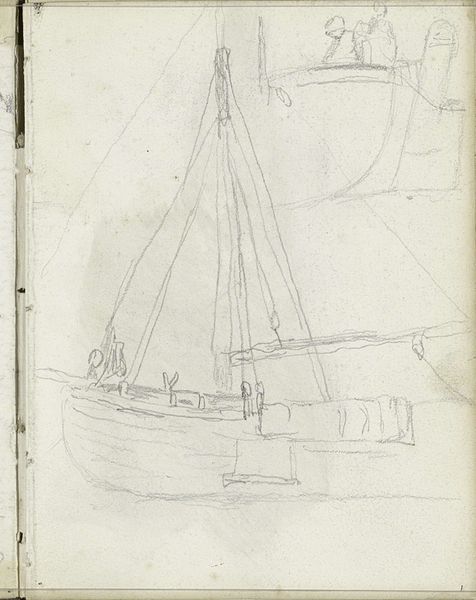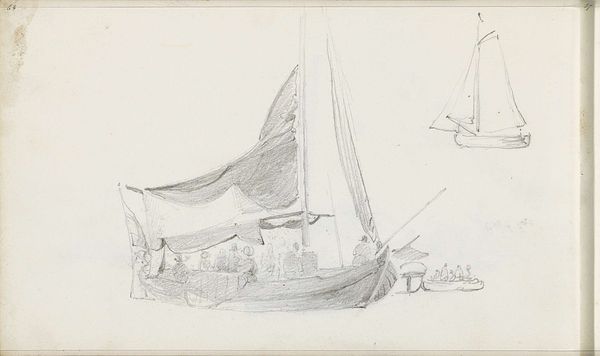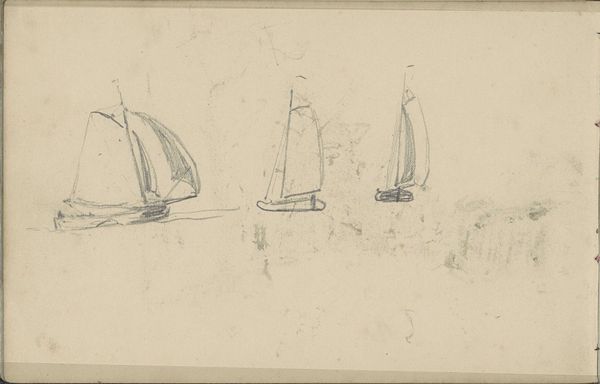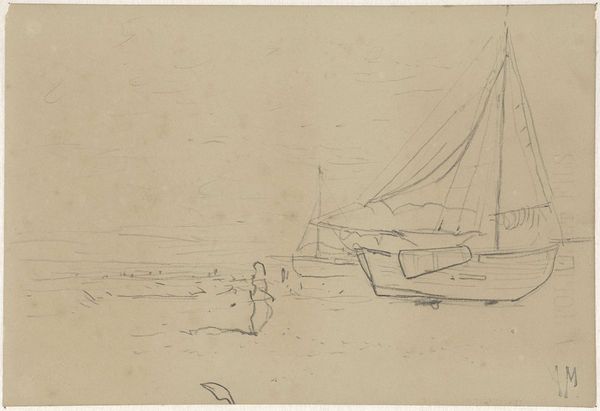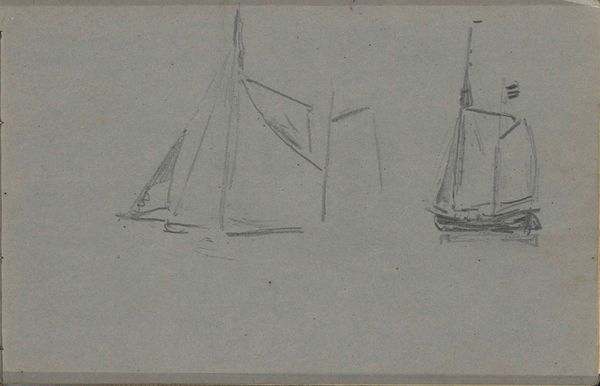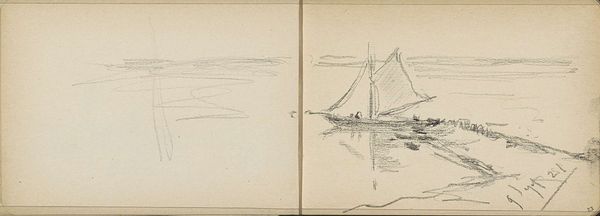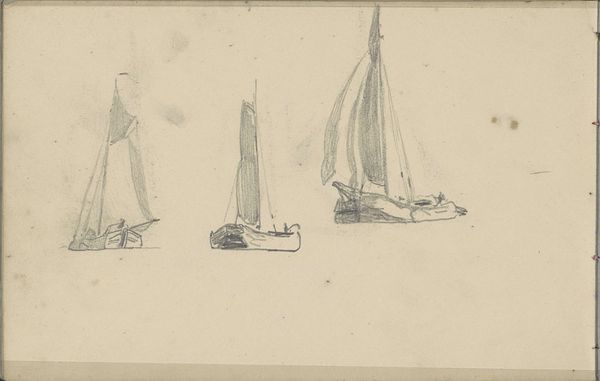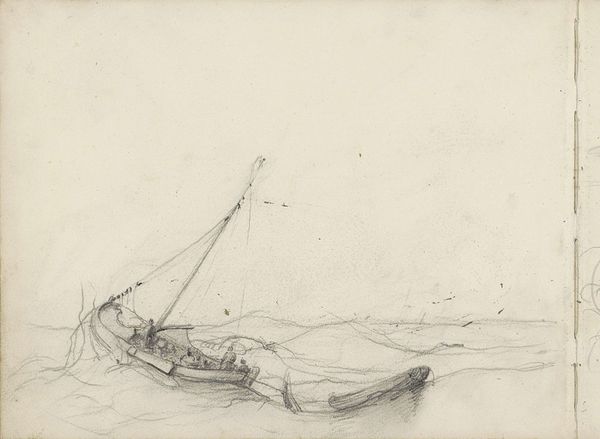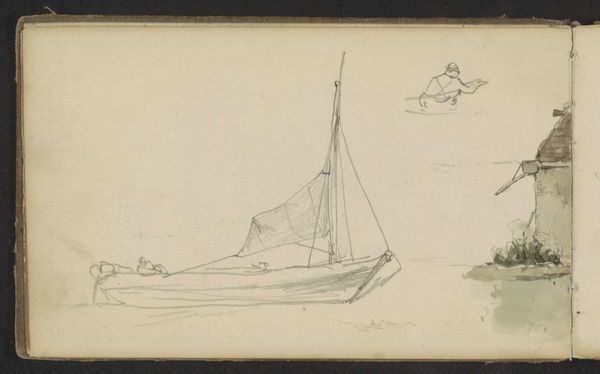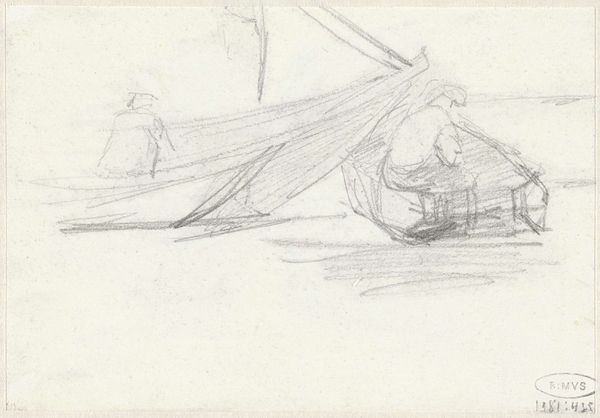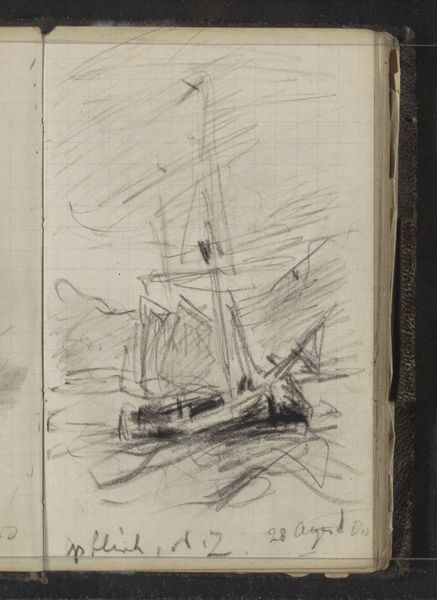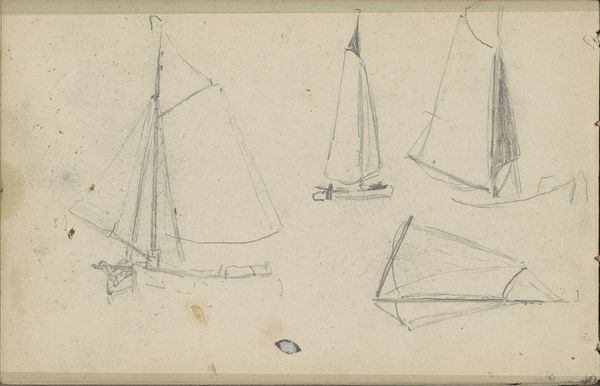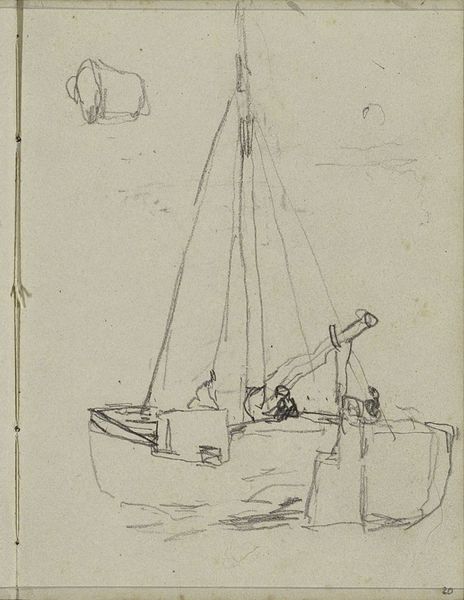
drawing, paper, pencil
#
drawing
#
landscape
#
paper
#
pencil
#
realism
Copyright: Rijks Museum: Open Domain
Curator: Today we're looking at "Studieblad met schepen," or "Study Sheet with Ships," by Louis Apol, created between 1880 and 1886. It's a pencil drawing on paper, currently held in the Rijksmuseum. Editor: It has the quiet stillness of dawn. The gray tones give an impression of softness; almost like a fading memory. Curator: Apol, known for his landscapes, captured the Dutch landscape with a realistic approach. Here, instead of a polished work, we see the raw, preliminary exploration. This sheet provides glimpses into the tools he was developing and is so fascinating precisely because of its nature as an exploration of ships. The symbol of transport, trade, and the endless human desire for what lies over the horizon. Editor: Exactly! And look at the different perspectives he attempts! These are not finished artworks intended to grace a wall, but evidence of artistic labour: he is trying out several depictions. You can almost hear the scratch of pencil on the paper, envisioning his studio. I’m drawn to the immediacy of the material and the labour invested in observation. Curator: I wonder what those ships symbolized for people in that era. Water travel connecting communities in trade and also adventure…perhaps emigration too. Apol condenses these various potential narratives on a single page, allowing those symbolic associations to coalesce into something greater than their discrete forms. Editor: And we should note the social realities around the paper and pencil; were they readily available? Did Apol receive special patronage allowing him access to resources, space, and the leisure time required to dedicate time to such studies? That social and economic stratification inevitably informed not only Apol’s work, but its subject matter. Curator: It certainly adds another layer of meaning. The simple pencil sketch transcends just a collection of vessels. They hint at stories, dreams and a record of both possibility and the labouring conditions for artists. Editor: Agreed. I appreciate gaining insights into the broader contexts of both Apol’s individual craft and society more widely.
Comments
No comments
Be the first to comment and join the conversation on the ultimate creative platform.
